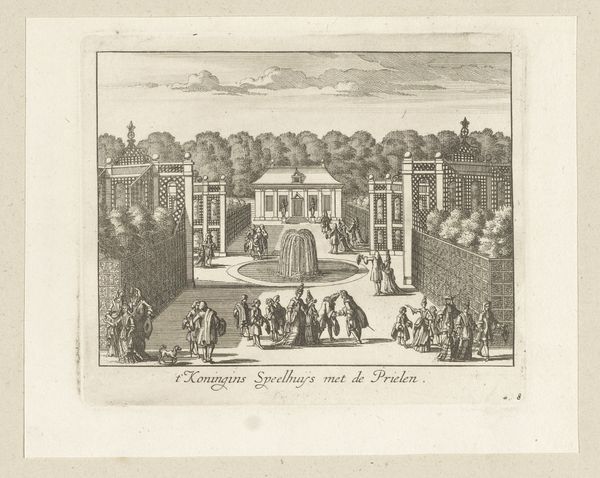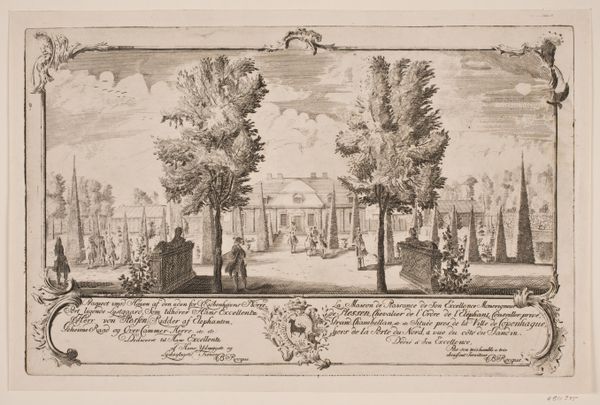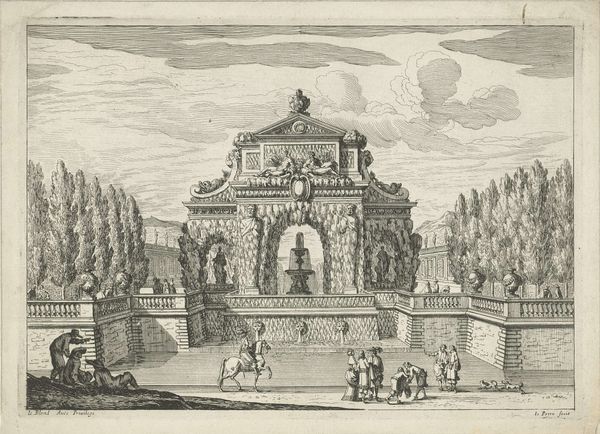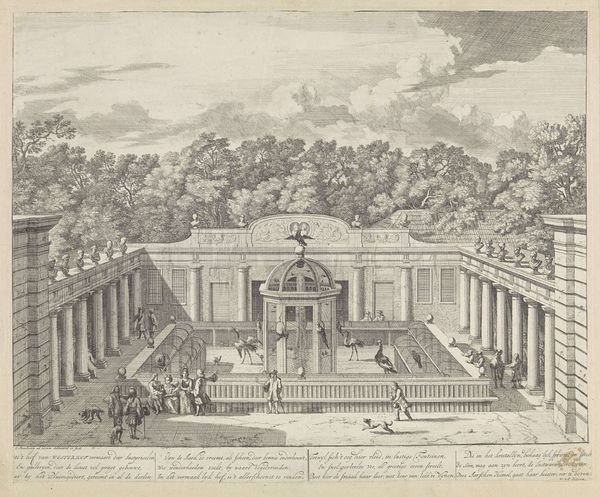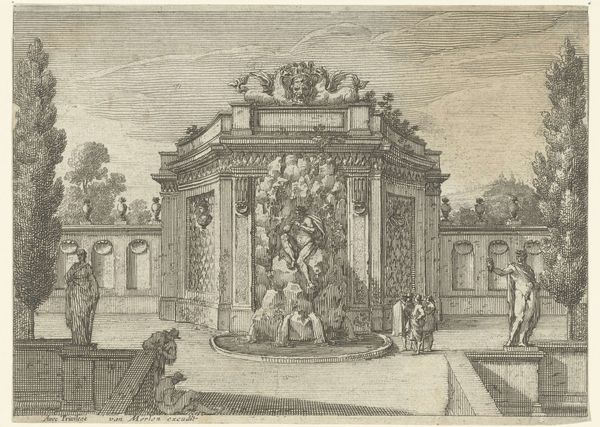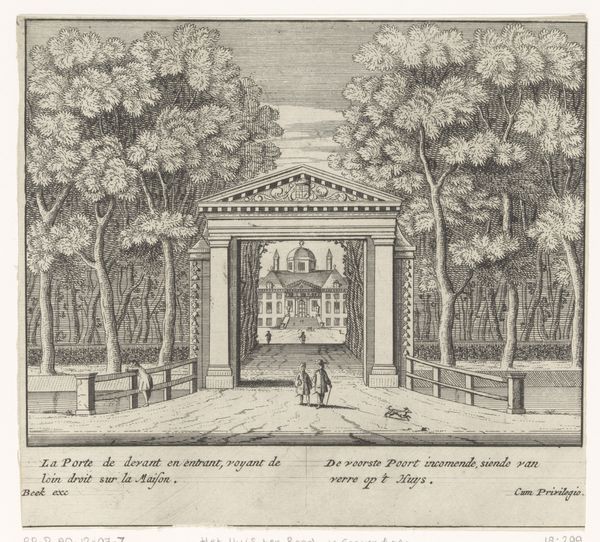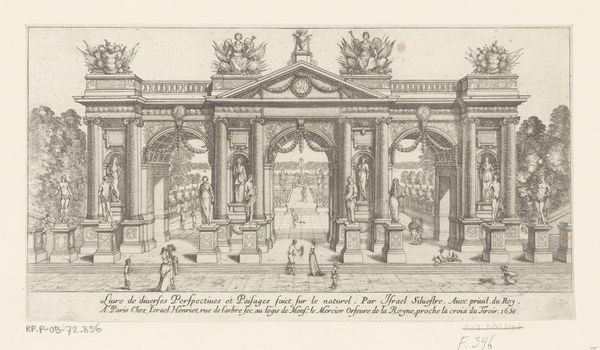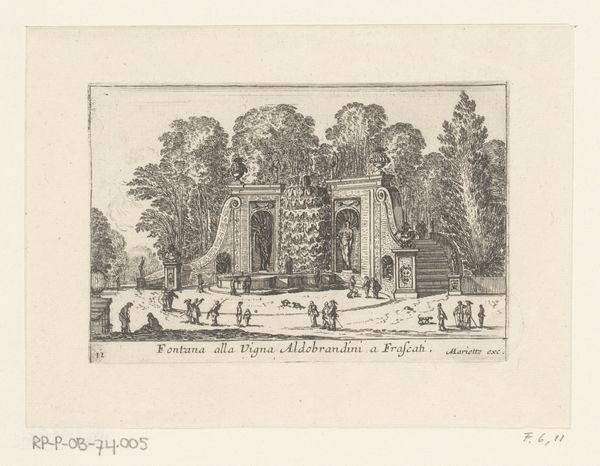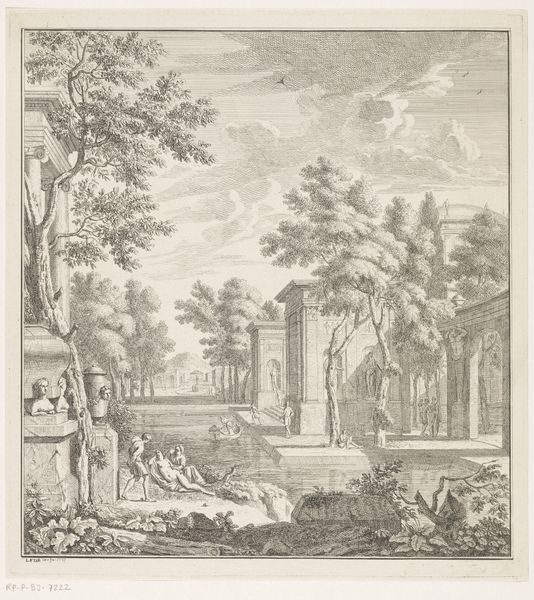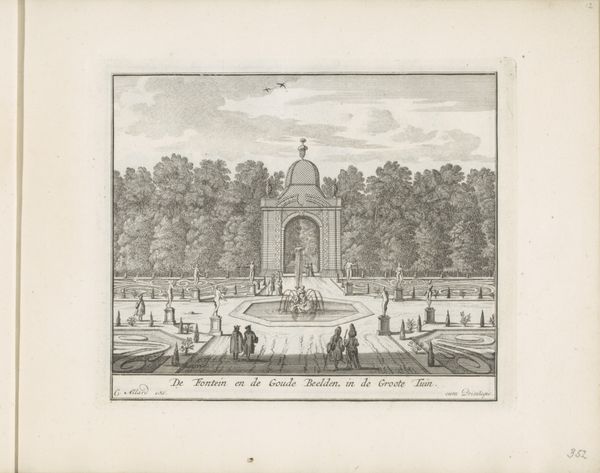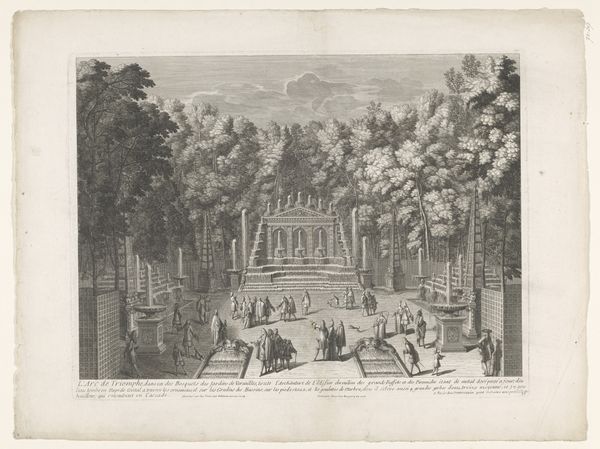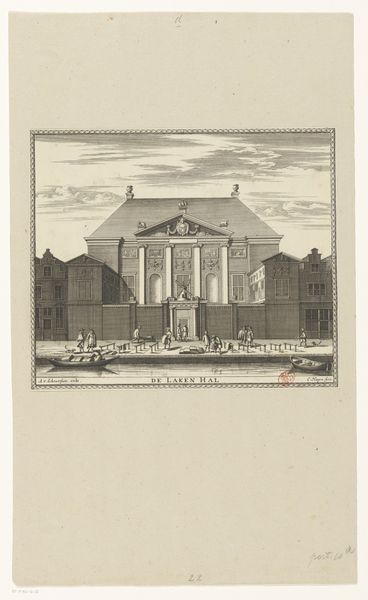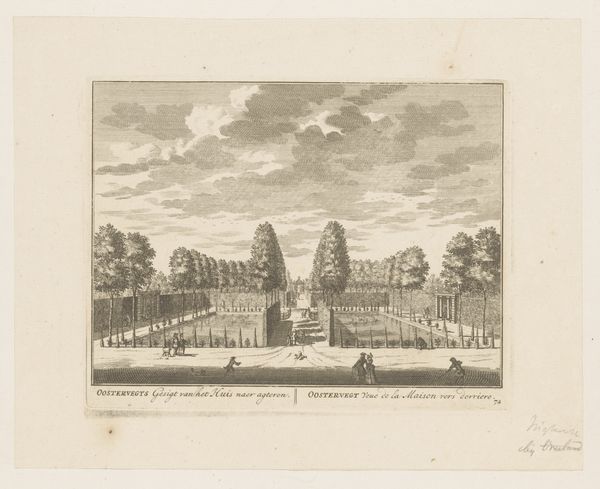
print, engraving, architecture
#
baroque
# print
#
old engraving style
#
landscape
#
cityscape
#
engraving
#
architecture
Dimensions: height 164 mm, width 232 mm
Copyright: Rijks Museum: Open Domain
Curator: This engraving, “Erichthonius uit zijn mand gelaten,” was created between 1650 and 1682 by Jean Lepautre. It's currently held in the collection of the Rijksmuseum. What are your first thoughts? Editor: Immediately, it strikes me as rigidly formal, even theatrical. The architectural backdrop dwarfs the figures in the foreground, giving it a stage-like quality. The line work seems precise, but the figures have an almost cursory feel. Curator: The narrative here depicts a moment from Greek mythology. Erichthonius, a figure of contested origins, is revealed from a basket to the daughters of Cecrops. There is much coded here about illegitimate birth and monstrous progeny in particular. Note how Erichthonius takes the visual form of two snakes and two human infants. Editor: Yes, it is fascinating that an image so steeped in classical allusion appears reproduced mechanically as a print. Considering that it would have circulated and been consumed by a wide audience, what tensions might there have been around democratization and classical taste during the Baroque period? Were these images treated as precious? What specific papers were used for them, and what processes of labour and distribution shaped Lepautre's workshop? Curator: The print format allows for wider dissemination, certainly, shaping how the iconography embedded in it could circulate and affect those seeing it. Landscape and cityscape imagery, which are prominently at play here, evoke powerful ideas of order and dominion, especially when blended with tales of origins like Erichthonius's. This juxtaposition likely contributed to a sense of cultural legitimacy amongst its contemporary audience. Editor: Exactly, so by carefully controlling the dissemination of these prints—from workshop to merchant— the meaning of "order" or "cultural legitimacy" becomes intertwined with specific socioeconomic contexts and power dynamics within early modern Europe. We’re not just looking at art here, but at complex mechanisms of labor, economy, and trade embedded into visuality. Curator: These kinds of complex symbolism definitely invites us to contemplate the cultural weight and continuous evolution of mythology, whilst reflecting social aspirations of its time. Editor: Precisely. Lepautre's engraving really forces us to unpack how art and manufacturing are inextricably tied together.
Comments
No comments
Be the first to comment and join the conversation on the ultimate creative platform.
